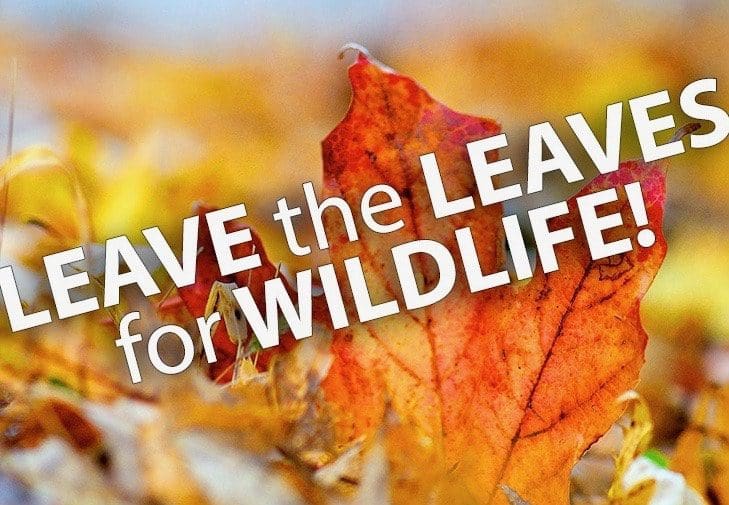Search Posts
Recent Posts
- Real Estate in RI: Seaside waterfront communities are all the rage. Who’s buying – Emilio DiSpirito June 6, 2025
- Outdoors in RI: 2A votes, Charter Yachts, active summer programs, garden tours, aquatic weeds… June 6, 2025
- All About Home Care, with two Rhode Island locations, closing after 22 years in business June 6, 2025
- GriefSPEAK: Angel wings with footprints – Mari Nardolillo Dias June 6, 2025
- Rhode Island Weather for June 6, 2025 – Jack Donnelly June 6, 2025
Categories
Subscribe!
Thanks for subscribing! Please check your email for further instructions.

What To Do With Fallen Leaves – “Leave them there!”
From a story by David Mizejewski, National Wildlife Federation
You shouldn’t feel obligated to rake up every last leaf in your yard this fall. Leave leaves on the ground – they have a lot of benefit to wildlife and your garden. Below are some tips on how to minimize the time you spend raking and maximize the benefit to wildlife and the greater environment that fallen leaves offer.
Just let leaves stay where they fall.
A leaf layer several inches deep is a natural thing in any area where trees naturally grow. The leaf layer is its own mini ecosystem! Many wildlife species live in the leaf layer as their primary habitat – including salamanders, chipmunks, wood frogs, box turtles, toads, shrews, earthworms, millipedes and many insect’s species.
Many butterfly and moth species overwinter in leaf litter such as luna moths, great spangled fritillaries, woolly bear caterpillars (which become Isabella tiger moths) and red-banded hairstreaks. Some overwinter as eggs, some as pupae and some as adults. If you rake up and throw away all of your leaves this fall, you’ll be getting rid of these beautiful and beneficial insects, many of which are pollinators. Butterfly and moth caterpillars are also a critically important food source for birds in the spring when they are feeding their babies. If you remove all of your fallen leaves, there will be fewer of these insects in and around your yard and fewer birds too. Also, some bats overwinter in the leaf litter, and can’t survive severe cold temperatures without it.
Good for wildlife, great for gardening
From a gardening perspective, fallen leaves offer a double benefit. Leaves form a natural mulch that helps suppress weeds and at the same time fertilize the soil as they break down. Why spend money on mulch and fertilizer when you can make your own?
A thick layer of fallen leaves will smother lawn. The best way to solve this problem is to reduce the size of your lawn, which is an ecological dead zone that supports almost no living things. If you must have a tidy look in your yard, or need to maintain one to comply with Home Owners Association rules, you can rake leaves off the lawn but still use them as mulch in your planting beds.
Avoid leaf blowers
They are loud and create noise pollution and rely on fossil fuels which pollute our air and contribute to global climate change. Use a rake instead. You’ll be able to hear the chirping of birds and other natural sounds while you’re working, plus you’ll get some good exercise!
If you must rake-up your leaves, don’t throw them in the trash. Compost leaves at home or drop them off at a municipal recycling center so they can be turned into compost that you and other members of your community can use in the spring. Some communities even offer curbside pick-up of leaves specifically for municipal composting operations.
If you’re worried about leaves blowing out of your garden beds, you can shred them into a finer textured mulch by putting them in a big trash can and using a weed whacker or hedge clippers to chop them down into smaller pieces less likely to blow away.
Composting or shredding will likely eliminate many of the insects living in the leaves as you shred them, but at least you’ll be recycling the leaves back into your soil.
Remember, the less time you have to spend doing the back-breaking work of raking up your leaves, the more time you have to enjoy the gorgeous fall weather outside and the wildlife visiting your garden!
Autumn is a fantastic time to make your yard wildlife-friendly by adding food, water, cover and a place for animals to raise their young.
